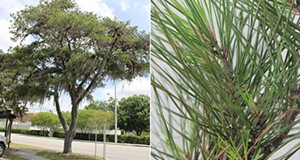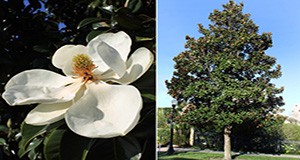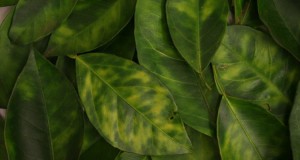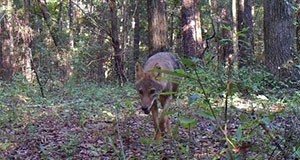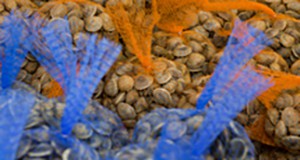
Molluscan shellfish aquaculture provides high quality and high value seafood for human consumption, and shellfish provide environmentally beneficial ecosystem services, such as nutrient extraction and water filtration, to the environment in which they are grown. In the past five decades, global fisheries and aquaculture have grown steadily, and seafood consumption per capita has increased. Molluscan shellfish has traditionally been a major component of world aquaculture. Today, molluscs are cultured in 76 countries. This 8-page fact sheet written by Huiping Yang, Leslie N. Sturmer, and Shirley Baker describes molluscan shellfish aquaculture in the United States and worldwide and outlines molluscan shellfish aquaculture stages and methodologies.
http://edis.ifas.ufl.edu/fa191
Author: Susan Gildersleeve
Candidate Species for Florida Aquaculture: Gulf Killifish, Fundulus grandis
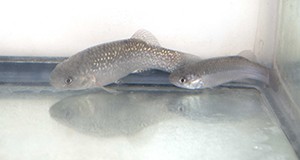
The Gulf killifish is a promising species for commercial aquaculture in Florida with the potential to help diversify the marine baitfish aquaculture industry in Florida and throughout the southeastern United States. Methods for culturing this species have improved in the past decade; this 6-page fact sheet describes the new methods and some strategies to give producers greater control of reproduction, larval growth, and survival. The publication provides the information producers need to make the most informed decision possible when considering Gulf killifish aquaculture. Written by Shane W. Ramee, Joshua T. Patterson, Cortney L. Ohs, and Matthew A. DiMaggio and published by the Program in Fisheries and Aquatic Sciences, School of Forest Resources and Conservation.
http://edis.ifas.ufl.edu/fa190
Ten Common Conifers of the Tampa Bay Area
Conifers are cone-bearing trees often identified by their needles. In addition to their value as landscape trees and lumber and paper sources, they are popular around the holidays as Christmas trees.
This 6-page guide written by Andrew K. Koeser, Holly Finley, Gitta Hasing, Gary W. Knox, and Melissa H. Friedman and published by the Environmental Horticulture Department will assist you in identifying the 10 most common conifers that grow in the Tampa Bay area of Florida. It is an efficient resource for master gardeners, novice tree inventory crews, 4-H forestry teams, and others interested in basic conifer identification.
Florida Consumer Preferences for Fruit-Producing Plant Attributes
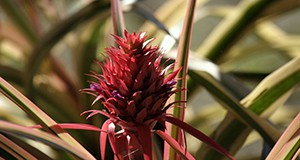
This 4-page report from the Food and Resource Economics Department and the UF/IFAS Mid-Florida Research and Education Center compares the effects of plant type, price, production method, and origin attributes on consumer preferences for fruit-producing plants. Authors Hayk Khachatryan and Alicia Rihn present the results of a survey of Florida plant consumers conducted in June and July of 2014 to rate their likelihood of purchasing plants with various attributes, reporting that production methods do indeed directly influence consumers’ preferences for fruit-producing plants. The article describes the implications for the environmental horticulture industry and provides suggestions for growers and retailers to more effectively market their plants.
http://edis.ifas.ufl.edu/fe981
Ten Common Flowering Trees of the Tampa Bay Area
Blooming trees serve as key focal points in the urban landscape. Florida’s flowering trees can be quite spectacular and leave you wondering, Wow, what tree is that?
This 7-page guide written by Gitta Hasing, Andrew K. Koeser, Gary W. Knox, and Melissa H. Friedman and published by the Environmental Horticulture Department will assist you in identifying the 10 most common flowering trees that grow in the Tampa Bay area of Florida. It is an efficient resource for master gardeners, novice tree inventory crews, 4-H forestry teams, and others interested in basic flowering tree identification.
edis.ifas.ufl.edu/ep505
Biology, Control and Invasive Potential of Giant Reed (Arundo donax L.) in Florida
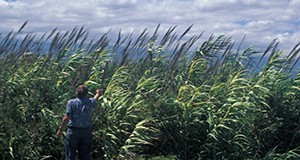
Arundo donax (L.), also known as giant reed, is a tall, fast-growing, bamboo-like grass that under ideal conditions can reach a height of up to 30 feet and a stem diameter up to 1.5 inches. Giant reed is invasive and difficult to control and has caused economic losses in California, Nevada, Utah, Arizona, New Mexico, and Texas. This species was introduced to Florida over 100 years ago and is currently naturalized in at least 26 of the 67 Florida counties. So far giant reed has not proved problematic in Florida, but recent permitting of its planting for bioenergy feed stock may increase the risk that it could naturalize into plant communities in Florida and other southeastern states and potentially cause economic losses as well as harm to native species and habitats. This 5-page fact sheet written by Pat Minogue and Seth Wright and published by the School of Forest Resources and Conservation describes the biology of this species and explains some strategies for its control.
edis.ifas.ufl.edu/fr396
Impact of Citrus Greening on Citrus Operations in Florida
Florida is the largest orange-producing state in the United States and the third largest orange producer in the world, but the Florida citrus industry and its position in the global citrus market are being jeopardized by a bacterial disease known as citrus greening or Huanglongbing (HLB). HLB hurts the vascular systems of citrus trees and prevents them from absorbing nutrients. The disease reduces yields, leads to smaller, lower-quality fruit, kills trees, and increases farmers’ production costs. First found in Florida in 2005, HLB has spread rapidly across the state.
As of January 2016, there is neither a cure nor an economically viable option for managing HLB-infected trees. Since HLB was first found in 2005, orange acreage and yield in Florida have decreased by 26% and 42%, respectively. Orange production dropped from 242 million to 104.6 million boxes in 2014. Even though the industry acknowledges that HLB has reached epidemic proportions across the state, estimates of the level of infection and its impact on citrus operations are scarce. This 4-page article written by Ariel Singerman and Pilar Useche and published by the Food and Resource Economics Department presents the first growers’-survey-based estimates of both the level of HLB infection in Florida and the impact of HLB on citrus operations in Florida.
http://edis.ifas.ufl.edu/fe983
Frost Protection Irrigation for Florida Peaches: Economic Considerations
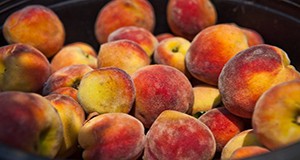
Peach production in Florida is increasing in importance, and the peach industry is growing rapidly in the state, where the early harvest and early market window allow the prices for Florida peaches to be high compared to those received by producers in the other southeastern states. Reduction in peach production costs would allow Florida peach producers to increase their net revenues. This 7-page fact sheet describes a strategy for limiting water use for frost protection of peach trees in the winter to reduce producers’ costs, protect lakes and streams, and reinforce the public image of farmers as innovators and environmental stewards. Written by Tori Bradley, Tatiana Borisova, and Mercy Olmstead and published by the Food and Resource Economics Department.
edis.ifas.ufl.edu/fe980
Conservation Reserve Program: Overview and Discussion

The Conservation Reserve Program, a governmental initiative with the goal of protecting the environment by retiring less productive but environmentally sensitive cropland from production, is by far the largest-scale, biggest-budgeted conservation program in the United States. The program has been a success, improving the land allocation of primary crop production and providing environmental benefits, but it is currently confronted with government budget cuts, and some farmers are reluctant to participate. This 5-page fact sheet written by Juhyun Oh and Zhengfei Guan and published by the Food and Resource Economics Department provides an overview of the Conservation Reserve Program and discusses relevant issues for Florida.
http://edis.ifas.ufl.edu/fe973
United States Biofuel Policies: Overview and Discussion

Governments at different levels in the United States have introduced various programs to promote alternative and renewable energies, reduce greenhouse gas emissions, and improve energy security. Some of these policy initiatives include mandates and tax credits to encourage the production of biofuels. As governmental efforts to promote renewable fuels as alternative sources of energy have evolved from subsidization to mandate, the production of biofuels has dramatically increased. The expansion of the mandate may contribute to reducing greenhouse gas emissions, but biofuels may be technically, economically, and environmentally inefficient. This 4-page fact sheet written by Zhengfei Guan and Juhyun Oh and published by the Food and Resource Economics Department reviews and discusses current US biofuel policies and explores potential outcomes.
http://edis.ifas.ufl.edu/fe974
Why is Exposure to Nature Important in Early Childhood?
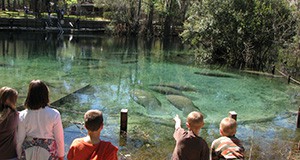
Early childhood is a crucial period for the physical and cognitive development of children. Most people who care for young children realize that children benefit from playing outside, but caretakers might not have ready access to the literature that supports their observations. This 4-page fact sheet written by Kristen Poppell and Martha C. Monroe and published by the School of Forest Resources and Conservation reviews some of the literature that shows that young children need to go outside and be around nature regularly. It describes some of the benefits children (and adults!) gain from learning and playing outdoors and includes suggestions for several resources for parents, teachers, and caretakers who hope to increase these opportunities for their youngsters.
edis.ifas.ufl.edu/fr394
Guide to Fertilization for Pine Straw Production on Coastal Plain Sites
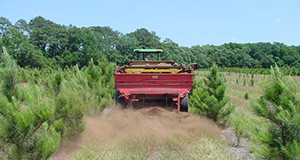
Pine straw has gained popularity as a mulch for residential and commercial landscaping in urban and suburban areas. It is attractive, relatively low-cost, and easy to work with. Best of all, it performs well in all kinds of locations–including those difficult-to-mulch slopes! Pine straw is perfect for water-efficient landscaping (xeriscaping), an increasingly popular choice for environmentally conscious landscapers. Thanks to the growing popularity of this natural mulch material, pine straw production has quickly become an important Florida industry. Regularly removing pine straw from pine stands is not without consequences, however; the loss of the cover and nutrients pine straw provides can reduce the productivity of the pine forest. Proper fertilization and harvest techniques are crucial to maintain the viability of the new industry and traditional pine industries alike. This 12-page guide written by Anna Osiecka, Patrick J. Minogue, and E. David Dickens and published by the School of Forest Resources and Conservation explains how to fertilize wisely to offset the effects of pine straw removal and maintain the viability of pine plantations.
http://edis.ifas.ufl.edu/fr395
Facts about Wildlife Diseases: Leprosy
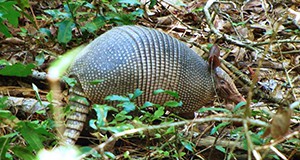
Worldwide, 250,000 new cases of leprosy are reported each year, and in the United States, approximately 150 new cases of leprosy are diagnosed each year. Also known as Hansen’s disease, leprosy (Mycobacterium leprae) is a bacterial disease that infects the skin and nerves, causing disfiguring skin sores, nerve damage, and occasionally lung damage if left untreated. Leprosy is spread between humans via respiratory droplets when people sneeze or cough. In the southeast United States, handling armadillos is thought to be the source of many infections. This 4-page fact sheet written by Shannon P. Moore and Samantha M. Wisely and published by the Wildlife Ecology and Conservation Department describes the disease in humans and armadillos and explains how to avoid it and limit its spread.
http://edis.ifas.ufl.edu/uw408
2014/15 Picking, Roadsiding, and Hauling Charges for Florida Citrus
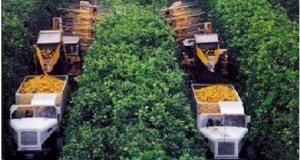
As Florida’s citrus industry confronts the impacts of Huanglongbing (HLB or citrus greening)–decreasing crop yields and production, lower quality fruit, and increasing cost of production–many growers are facing declining returns. A 2015 survey of twelve Florida citrus harvesters to collect data on harvesting charges during the 2014/15 season revealed that average picking and roadsiding charges for fresh fruit are in most cases lower than those for processed fruit, likely because of the impact of HLB. This 3-page fact sheet written by Ariel Singerman of UF/IFAS Citrus Research and Education Center and published by the Food and Resource Economics Department presents the results of the survey and provides a table summarizing the harvesting charges for citrus during the 2014/15 season with the average and the range of picking and roadsiding charges by variety and type of fruit (fresh versus processed), as well as the average hauling charges for all varieties by distance. The fact sheet will assist growers in the effort to compute the changes to their economic returns as the industry adapts to remain profitable.
http://edis.ifas.ufl.edu/fe977
Conservation Subdivision: Post-construction Phase: Creating Signs to Educate Residents
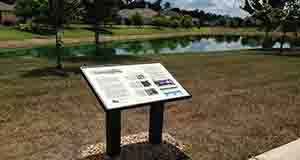
Installing educational signs is one way to increase awareness and participation in conservation activities. This six-page fact sheet written by Mark Hostetler and published by the Department of Wildlife Ecology and Conservation explains how to create educational signs and install them in residential neighborhoods as a way to inform residents about biodiversity conservation. The fact sheet, one of the UF/IFAS Conservation Subdivision series, explains how to design effective signs, how to manage a series of signs to keep the information fresh, and how to maintain the signs to ensure that residents and visitors to the community continue to benefit and maintain their homes, yards, and neighborhoods sustainably for years to come.
http://edis.ifas.ufl.edu/uw407
Rancher Perceptions of the Coyote in Florida
Throughout the continental United States and large portions of Canada and Central America, changes people make to the landscape such as the clearing of forested land and the extermination of larger predators like gray and red wolves have made the environment perfect for the adaptive coyote. Coyotes have rapidly taken advantage of these environmental shifts and expanded into new areas, now including all 67 counties in Florida and even Key Largo. Each year more people in Florida catch a glimpse of a coyote crossing a road or running across open fields, or notice coyote scat along a hiking trail–and farmers and ranchers are seeing signs of coyotes on their farms.
As coyotes become a fixture of the Florida landscape, potential grows for conflict with humans. Coyotes are in Florida to stay, and understanding the agricultural community’s perception of their influence on livestock and wildlife is important to developing effective policies for coyote management. This 4-page fact sheet written by Raoul K. Boughton, Bethany Wight, and Martin B. Main and published by the Wildlife Ecology and Conservation Department provides results of ongoing statewide surveys of ranchers in Florida regarding the influence of coyotes on their operations.
What Is the Economic Benefit of a Citrus Health Management Area? A Case Study
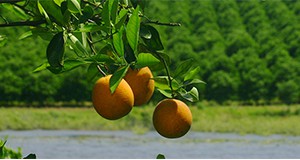
A Citrus Health Management Area (CHMA) is a group of growers who work cooperatively to coordinate insecticide application timing and mode of action in order control the insect vector of citrus greening disease. CHMAs help prevent insect vectors from moving between groves and reduce the likelihood that insects will develop pesticide resistance. This 3-page fact sheet written by Ariel Singerman and Brandon Page and published by the Food and Resource Economics Department analyzes the case-study data on yields of Valencia oranges from blocks located in two different categories of CHMAs to find the impact of citrus greening disease on citrus yields and provide evidence on the effectiveness of best class CHMAs as a way to deal with the disease. The analysis provides evidence that CHMAs can enhance an individual grower’s profitability at a time when margins are becoming increasingly narrow.
edis.ifas.ufl.edu/fe982
Top Challenges Facing the Florida Strawberry Industry: Insights from a Comprehensive Industry Survey
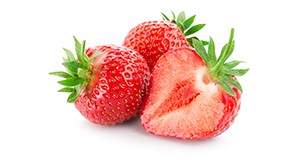
Florida is the largest supplier of winter strawberries in the United States and the second largest overall after California. The farm-gate value of Florida strawberries is approximately US$400 million and the total economic contribution of the industry is estimated at about US$1 billion. Even so, over the last few years, the Florida strawberry industry has faced many challenges. In 2012, Florida production was down by 20% compared to the previous year. The record level of imports of strawberries from Mexico deeply depressed the market, causing a market crash at the peak season of the Florida production. Decreased revenues coupled with increased production costs have caused significant losses to the Florida industry. In this three-page article, Zhengfei Guan, Feng Wu, and Alicia Whidden investigate Florida growers’ perceptions of various threats and challenges and discuss those threats that should be dealt with as high priority. Published by the UF Food and Resource Economics Department.
edis.ifas.ufl.edu/fe972
Lowering Soil pH to Optimize Nutrient Management and Crop Production
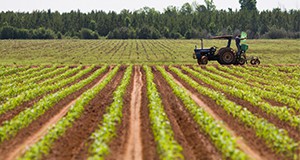
Because temperatures are relatively high and it rains a lot in the region, mineral soils in the southeastern United States tend to be naturally acidic. Managing soils for both pH and nutrients helps maintain soil fertility levels and ensure economic agricultural production. If they are not maintained in the 6.0 to 6.5 pH range, which is best for most crops, most mineral soils in the Southeast will gradually return to their natural acidic state and their fertility levels will drop. In order to keep the soil in the right range, farmers have been encouraged to make routine applications of lime. Calibrated lime requirement tests are part of standard soil tests in this region, but getting the balance right can be tricky. This 4-page fact sheet written by Rao Mylavarapu, George Hochmuth, Cheryl Mackowiak, Alan Wright, and Maria Silevira and published by the Soil and Water Science Department explains the factors that contribute to increased soil pH and describes methods for reducing soil pH that will reduce the chances of either under- or over-liming the soil.
http://edis.ifas.ufl.edu/ss651
Ocho Pasos para Desarrollar un Plan Simple de Mercadeo

El mercadeo es parte esencial de un negocio. De hecho es el corazón de cualquier negocio que sirva la función vital de convertir actividades de producción en desempeño financiero, asegurando la supervivencia del negocio. El mercadeo es clave, sin importar el tipo de negocio (incluyendo la agricultura).
This 5-page fact sheet provides a rationale for developing a marketing plan, a step-by-step process for creating one, and a marketing plan worksheet. Written by Edward A. Evans and Fredy H. Ballen, and published by the UF Department of Food and Resource Economics. Translated into Spanish November 2015. (Photo credit: Thinkstock)
http://edis.ifas.ufl.edu/fe978
(also available in English as “Eight Steps to Developing a Simple Marketing Plan” at http://edis.ifas.ufl.edu/fe967)
